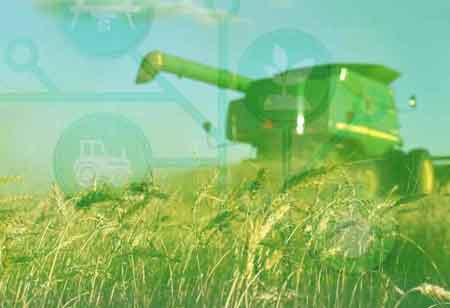Thank you for Subscribing to Agri Business Review Weekly Brief
Collaborative Robots Reshaping European Agriculture
Across Europe's expansive farmlands, a new type of worker is emerging: the collaborative robot, or cobot.

By
Agri Business Review | Monday, July 22, 2024
Stay ahead of the industry with exclusive feature stories on the top companies, expert insights and the latest news delivered straight to your inbox. Subscribe today.
Cobots revamp Europe's agricultural sector, enhancing productivity, safety, and sustainability. This is driven by a shrinking workforce, rising labour costs, and automation, prompting government investment in research and development.
FREMONT, CA: Across Europe's expansive farmlands, a new type of worker is emerging: the collaborative robot, or cobot. These innovative machines are designed not to replace farmers but to work alongside them, enhancing productivity, safety, and sustainability in the agricultural sector.
The Rise of Collaborative Robotics
Unlike traditional industrial robots, cobots are designed explicitly for safe human-robot interaction. They are typically smaller, lighter, and equipped with sensors and speed limitations to prevent accidental injury, enabling them to operate seamlessly in shared workspaces with farmers.
Moreover, cobots come with user-friendly interfaces and intuitive programming, making them accessible to farmers with varying technical expertise. This is particularly advantageous in Europe, where many farms are family-owned and operated.
Cobots are becoming invaluable assets in European agriculture, offering a range of applications that continuously evolve. In precision harvesting, cobots equipped with advanced vision systems excel at tasks such as fruit picking. They can identify ripe produce and harvest it gently, reducing waste and ensuring higher quality yields, which is particularly beneficial for delicate fruits like strawberries and tomatoes, a significant concern for European farmers. Cobots also ease the burden of monotonous tasks, from weeding and thinning crops to performing tedious greenhouse activities. Taking on physically demanding and repetitive labour allows farmers to concentrate on higher-level tasks like crop management, irrigation, and market analysis. Additionally, cobots enhance safety by undertaking dangerous tasks, such as operating heavy machinery or handling hazardous chemicals, thus minimising the risk of accidents and injuries. Furthermore, with their built-in sensors, cobots collect valuable data on soil conditions, crop health, and environmental parameters, empowering farmers to make data-driven decisions about resource management, fertilisation, and pest control, ultimately optimising yields and promoting sustainable practices.





